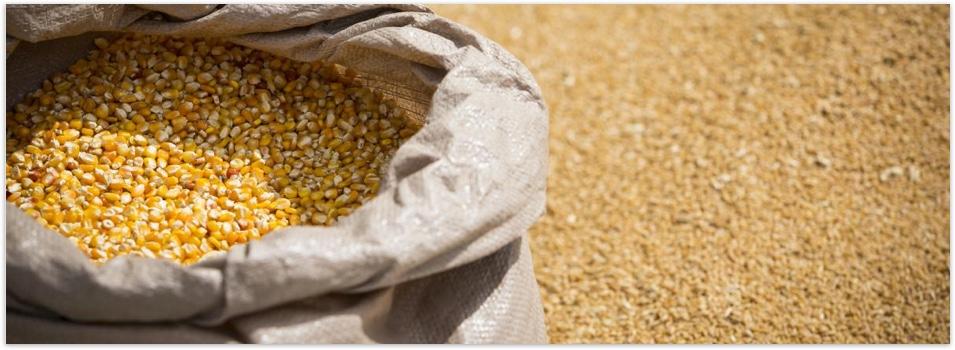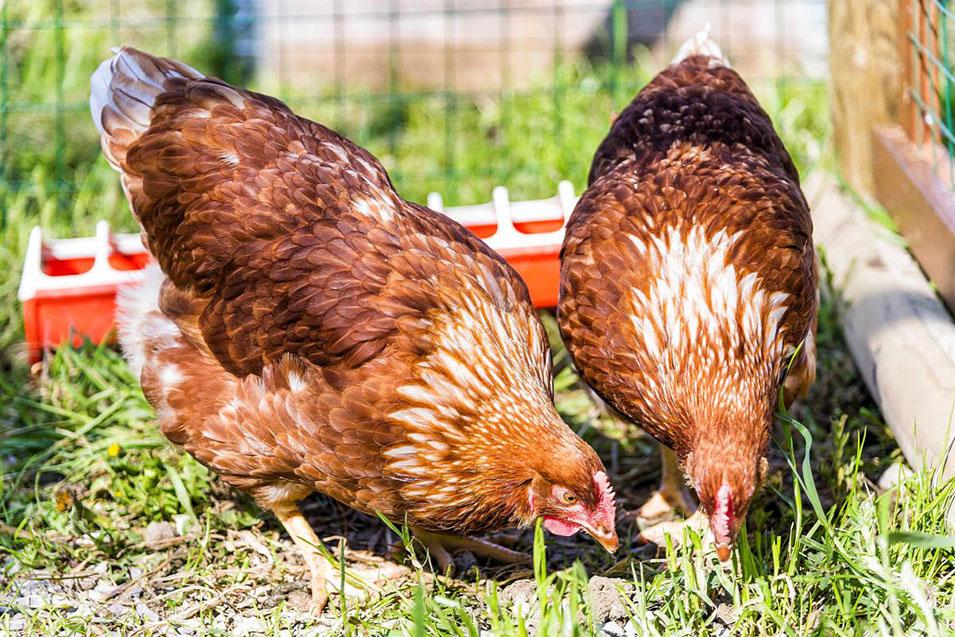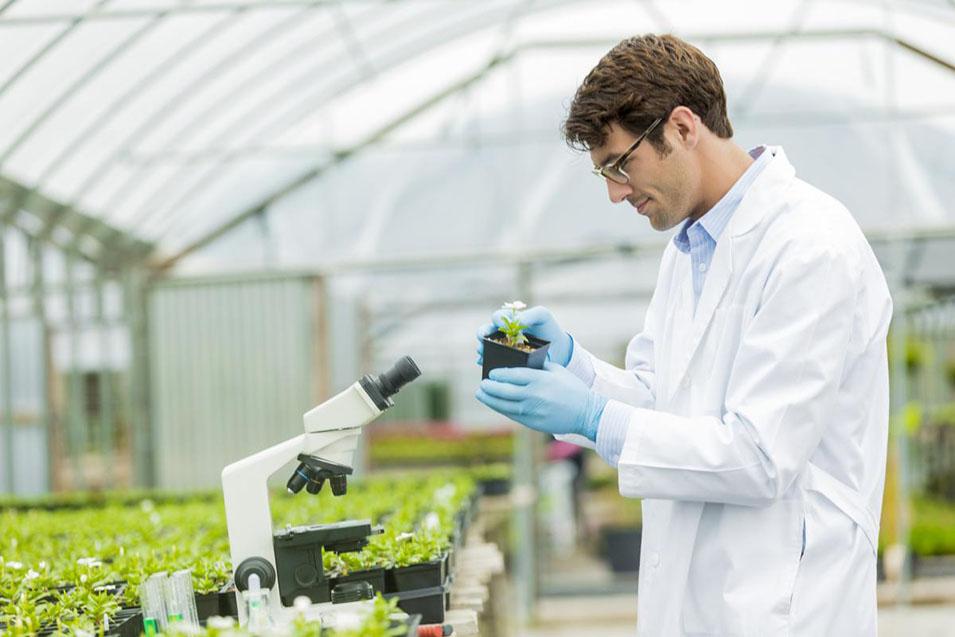GMO Myths Vs. GMO Facts
Can salt be a GMO? Is it true that no long-term studies have been done on GMOs? There are many fun facts about GMOs and GMO myths and truths out there, but which ones are true and which ones are false?
In this article, we cover some interesting GMO facts, including common GMO misconceptions and the truth about GMOs. Wondering why some people are skeptical about the use of GMOs? Find out here.
So, if you’re ready for some GMO facts and GMO myths, read on.

GMO Myth 1
There are dozens of GMO crops, including strawberries, bananas, and wheat. There is even GMO water and GMO salt.
GMO Fact 1
The top 5 most planted GMO crops worldwide are soybean, maize, cotton, canola, and alfalfa. The following biotech crops were also planted in different countries: papaya, eggplant (brinjal), potato, apple, safflower, pineapple, and sugarcane. Many of these are available in various countries around the world. Other GMO crops that could be available soon include rice, cowpea, cassava, sorghum, and banana. Please visit the ISAAA website for more information on GMO crops available in specific countries.
The majority of these crops, like alfalfa, field corn, and soy are actually used for livestock feed. Other uses for these crops include common food ingredients, such as sugar, canola oil, corn starch, and soy lecithin. What is true about GM crops is you may find only a few of these in your produce section: rainbow papaya, summer squash, sweet corn, potatoes, and apples.
You may also see non-GMO water and non-GMO salt, but here’s the catch: it’s not possible for either to be a GMO in the first place! Although many products aren’t among the commercially available GMO crops sold, you may still see certified GMO-free labels even though there’s no GMO counterpart.

GMO Myth 2
GMOs cause cancer, autism, allergies, gluten intolerance, and other illnesses.
GMO Fact 2
While some people may think there is such a thing as ‘GMO cancer’, in the 20-plus years on the market, GMOs have not caused or contributed to a single illness or death. The health and safety of GMOs have been validated by many independent scientists and organizations around the world. Groups ranging from the World Health Organization, the Royal Society of Medicine (UK), the European Food Safety Authority (EFSA), and the International Seed Federation (ISF), along with various governing bodies on every continent around the world have all affirmed the safety of GMO crops. Since 1992, more than 40 government agencies have given approvals for GMO food, feed, and cultivation. In many countries, multiple agencies are involved in the regulation of GMOs.
In the spring of 2016, The National Academies of Science, Engineering, and Medicine (NAS) researched the issue of GMO safety and concluded, again, that GMOs are safe. Their study found “no substantial evidence of a difference in risks to human health between current commercially available genetically engineered crops and conventionally bred crops.” More than 20 scientists, researchers, agricultural and industry experts reviewed over 20 years of data since GMOs were introduced, including nearly 900 studies and publications, animal studies, allergenicity testing, and North American and European health data and concluded that GMOs pose no risk to our health.

GMO Myth 3
GMO companies force farmers to grow their seeds or sue farmers if GMO seeds or pollen blow into other fields.
GMO Fact 3
Farmers choose what seeds to grow based on what is best for their farms, market demand, and local growing environments.
In fact, there are a wide variety of seed options available to farmers, including organic, hybrid, conventional, and genetically modified seeds. Many farmers successfully grow organic, non-GMO and genetically modified crops on the same farm.
Brian Scott, a farmer who grows corn and soybeans, among other crops, stated, “I choose what seeds I plant every year. I’m not locked into buying seed from one company from one season to the next.”
With regard to biotech companies suing farmers for GMO replanting seeds or pollen blowing into their fields, this is simply not true. In this post, Greg Conko, Senior Fellow at the Competitive Enterprise Institute, explains that “Urban legends also claim that biotech seed companies troll the country, suing farmers for patent infringement when their crops have been accidentally cross-pollinated by a neighbor’s genetically engineered plants. But not a single known case of this has actually occurred.”
The myth is spread by misrepresenting cases, such as that of Canadian farmer Percy Schmeiser, who claimed he was sued when patented Roundup Ready canola plants were discovered on his farm. But the Canadian court that heard his case concluded that Schmeiser had intentionally planted canola seeds containing the patented Roundup Ready gene and was not merely a victim of unintended cross-pollination.

GMO Myth 4
GMOs harm bees, butterflies, and other pollinators.
GMO Fact 4
GMOs are not believed to have any impact on honey bee populations.
The sudden and widespread disappearances of adult honey bees from hives, termed Colony Collapse Disorder (CCD), became a national concern more than 10 years ago. Claims have been circulated that GMO crops somehow harm bees, but this is one of the myths about GMOs that have been refuted by the mainstream scientific community.
Scientists and regulators recognize the bee populations may be challenged by a number of factors including pests and parasites, microbial disease, inadequate diet and loss of genetic diversity.
The insecticidal proteins produced by the currently available insect-resistant crops are derived from a common soil bacterium and all of the proteins used in insect-resistant GM plants are tested for toxicity to honey bees. None of these proteins have provided any evidence of harm in either short or long term testing with both adult and larval honey bees.
If a variety of factors are impacting bee health, could GMOs be one of them? Bee Ambassador for Bayer Chris Sansone, who has more than 30 years of experience as a professor and extension specialist at Texas A&M University, points to several scientific studies indicating this is not the case. He notes that “genetically modified plants and their impact on honey bees have been widely studied and the results indicate that GM plants are not harmful to bees.”
As for butterflies, there are a variety of factors impacting monarch butterfly populations, such as deforestation, parasitism and ebbing populations of their host milkweed plants. A 2019 paper shows that GMOs are not the main culprit in any monarch butterfly decline.
There are claims that GMOs and herbicides (more specifically a herbicide called glyphosate) are contributing to the decline in milkweed – a primary food source for monarch larvae (caterpillars)— and that the butterflies have been harmed by eating pollen from GM Bt corn. GMO Answers experts address both of these claims.
Dr. Andrew Kniss, associate professor of weed ecology and management at the University of Wyoming, explains why the cause for the milkweed decline is a complex issue, concluding that while herbicides may have played a role in the decline of species like milkweed, “the research does suggest that there are more important factors than herbicides responsible for the decline of native plant species near crop fields, including milkweeds.” This study he points to was conducted by USDA-ARS and Penn State scientists.

GMO Myth 5
GMOs increase the price of food.
GMO Fact 5
GMOs have actually contributed to reducing the real cost of food.
This is one of the more common myths about GMOs, but it is untrue. Dr. Stuart Smyth, assistant professor with the department of bioresource policy, business and economics at the University of Saskatchewan explains, “Typically, GM crops are the more efficient crops and that means their price and costs as ingredients are less than non-GMOs.” So in terms of the cost difference between GMO vs non-GMO foods, GMOs are helping to keep prices lower.
Food prices are affected by a number of factors, including commodity prices and by other costs, such as wages, transportation, in addition to losses due to weather, pests or disease. For example, foods that have to be shipped or hauled long distances will be affected when the cost of fuel rises.
Another interesting fact about GMOs is that GM crops have helped to increase the supply of corn and soybeans, so the rise in food prices is lower than it would be if GM crops did not exist. A 2016 study performed by Tyner et al from Purdue University presented the significant crop yield loss and other economic effects of banning GM crops in the U.S. They showed that if all genetically modified organisms (GMOs) in the U.S. will be eliminated, corn yield declines at 11% on average, soybeans lose 5% of their yields, and cotton at 18.6%. With lower crop yields without GMOs, corn prices would increase as much as 28% and soybeans as much as 22%, according to the study.
Looking globally, UC Berkeley Agriculture Professor David Zilberman’s findings note, “Biotech corn has an estimated yield of 34% more in the Philippines, 11% in South Africa, 9% in Argentina and 5 to 6% each in the U.S. and Spain.”
Without genetically modified crops, Zilberman also found, “the price of food would be 5 to 10%higher than it is now –particularly for meat, poultry, eggs, milk and processed food. The poorest people will suffer the most”, he says, adding that the cost will be borne mostly by people in developing countries, where many of these foods are already difficult to come by.

GMO Myth 6
If livestock eats genetically modified grain, there will be GMO milk, meat and eggs.
GMO Fact 6
GMOs have never been detected in milk, meat or eggs derived from animals fed GM feed.
(Ref. U of Cal. GE and Animal Feed)
It has been estimated that over 70% of harvested GMO crops are fed to food-producing animals, making the world’s livestock populations the largest consumers of the current generation of GMO crops. However, GMOs have never been detected in food derived from animals fed GMO crops.
It’s important to understand that almost all the food that we (or animals) eat contains DNA and proteins. The DNA and proteins found in food, GMO and non-GMO, are processed by the digestive system in our gastrointestinal tract. During digestion, GMO and non-GMO DNA is broken down into the four nucleotides that make up all DNA, and/or into small nucleotide fragments. Similarly, proteins, again GMO and non-GMO, are broken down into one or a few of the 21 amino acids that exist in nature. Many studies have been conducted on the potential for GMO DNA or proteins to be transferred into animal tissue. No intact or immunologically reactive protein or DNA has been detected in animal tissue.
Therefore, as Alison Van Eenennaam, Ph.D., extension specialist in animal genomics and biotechnology at the University of California, Davis, explains, “Genetically engineered crops are digested by animals in the same way as conventional crops. Evidence to date strongly suggests that feeding livestock with genetically engineered crops is equivalent to feeding unmodified feed sources in terms of nutrient composition, digestibility and feeding value.” Additionally, Dr. Van Eenennaam states, “Genetically engineered DNA, or the novel proteins encoded therein, have never been detected in the milk, meat or eggs derived from animals fed genetically engineered feedstuffs. Several studies have documented that small fragments of plant-derived, but not genetically engineered, DNA can pass into the tissues of animals that consume the plants.”

GMO Myth 7
GMOs have a negative impact on the environment.
GMO Fact 7
GMOs allow farmers to preserve the land while doing more with fewer resources and help us address today's most pressing environmental challenges.
When determining the environmental impact of GMOs vs non-GMOs in agriculture, consider the ability for GMOs to preserve biodiversity. GM crops increase productivity on existing agricultural land and protect biodiversity by sparing lands not intensively cultivated. Through enhanced adoption of conservation tillage practices, the reduction of insecticide use, and the use of more environmentally benign herbicides that increase yields, GM agriculture has alleviated the pressure to convert additional land into agricultural use.
GMOs can increase productivity in agriculture. According to PG Economics, from 1996 to 2020, GMO crops are estimated to have contributed to additional 363.76 million tons of soybeans, 655.87 million tons of corn, 40.78 million tons of cotton lint and 17.63 million tons of canola, without having to bring more land into production. To produce the same amount of crops without GM technology, farmers would have needed to cultivate 58.7 million additional acres of land, so in this case, the environmental impact of genetically modified crops is hugely positive. GM crops have contributed to higher yields, e.g., 30% more in some farming areas, and can contribute to poverty reduction and food security in developing countries.
GMOs can reduce soil erosion. Herbicide-tolerant (HT) crops enable more farmers to adopt conservation tillage because they help farmers to more effectively and efficiently control weeds at a lower cost. Florida farmer Lawson Mozley explains that with herbicide tolerant GM crops, weeds can be sprayed and remain in the field to protect the soil. Then the incoming crop is planted directly into the leftover organic matter without turning over the soil.
GMOs can help conserve water. Farmers utilize many tools to conserve water including drip irrigation systems. GMOs provide another tool that farmers can employ to help conserve water. HT crops, along with conservation tillage, aid in soil moisture retention, which can reduce the need to irrigate. GMOs can help reduce water use in another way – drought tolerance. This GM trait can help crops cope with stress and allow farmers to increase yields when periods of drought occur – without supplemental water from irrigation.
GMOs can help improve air quality. GMOs can reduce agriculturally-related greenhouse gas (GHG) emissions. Agricultural economist Graham Brookes reports: GMOs have helped farmers reduce their environmental footprint by allowing them to use fewer inputs and enabling a shift to reduced tillage. These practices have led to less time spent on a tractor, less fuel used and fewer emissions. As a result, GMOs have helped reduce CO2 emissions equivalent to removing nearly 15.6 million cars from the road for one year.
GMOs can lead to fewer pesticide applications. A common misconception is that the adoption of GM crops have increased the use of pesticides when just the opposite is true. Overall GM crops, including crops with the “Bt” (Bacillus thuringiensis) trait for insect resistance, have contributed to an 7.2% decrease in pesticide applications. Not only is this beneficial to our environment, but also to the farmers who grow the crops. Learn more about how some GMOs have led to a reduction in pesticide applications.

GMO Myth 8
No long-term health studies have been conducted on GMO crops.
GMO Fact 8
GMO crops are repeatedly and extensively tested for consumer and environmental safety.
The truth about GMO testing is these tests are reviewed more in more than 40 countries around the world, and many countries have multiple regulatory agencies reviewing GMO crop approvals. Tests are conducted by both industry experts and independent organizations to ensure that GMO foods are safe to eat. Multiple studies are conducted to verify that each new GMO crop is as safe as its conventional counterparty. GMOs must be shown to be safe to grow, safe for the environment, and safe to eat.
An ongoing program called Project GRACE, publicly funded by the European Union, has several objectives, including conducting 90-day animal feeding trials and animal studies with an extended time frame. The scientists involved with this project recently published a 1-year feeding trial with GM maize MON810 variety and conventional maize varieties. The results obtained show that the MON810 maize at a level of up to 33% in the diet did not induce adverse effects in rats after chronic exposure.
This literature review provides a good summary of long-term feeding studies with diets containing large amounts of GMO-derived ingredients. It concludes that “the studies reviewed present evidence to show that GM plants are nutritionally equivalent to their non-GM counterparts and can be safely used in food and feed.” The European Commission report, A Decade of EU-Funded GMO Research, also highlights the long-term safety and benefits of GMO crops.
In fact, every major scientific body and regulatory agency in the world has reviewed the research about GMOs and openly declared crop biotechnology and the foods currently available for sale to be safe. So, despite the myths, the truth about genetically modified food is that it is entirely safe for human consumption.

GMO Myth 9
The non-GMO label means the food is healthier, better for the environment, and doesn't contain any GMOS.
GMO Fact 9
The non-GMO label means a food product contains fewer than 1% of genetically modified ingredients. Because of this, food labeled non-GMO is not legally considered GMO-free.
The truth behind non-GMO labeling:
- The non-GMO label doesn’t always mean it’s replacing a GMO alternative. Often, companies use the non-GMO label on foods that were never developed with biotechnology. For example, there aren’t any GMO tomatoes available on supermarket shelves. So, when you see non-GMO tomatoes, remember, you’re paying a premium for a meaningless label.
- The non-GMO label doesn’t mean it's healthier. There’s scientific consensus that GMO foods are as healthy as non-GMO foods. Sometimes they're even healthier. Genetically modified foods are also safe to eat.
- The non-GMO label doesn’t mean it’s better for the environment. Several GMO crops use less water and fewer pesticides. Non-GMO alternatives often need more environmental resources.
- The non-GMO label doesn’t mean there aren’t any GMOs. Non-GMO labeled food products can contain up to 1% GMO ingredients. Non-GMO labeled livestock, poultry, beef, and seafood feed and supplements may include up to 5% GMO ingredients. Non-edible products, like lotions and cleaning supplies, can include up to 1.5% GMO ingredients.
What Are The Common Misconceptions Surrounding GMOs And Nutrition?


